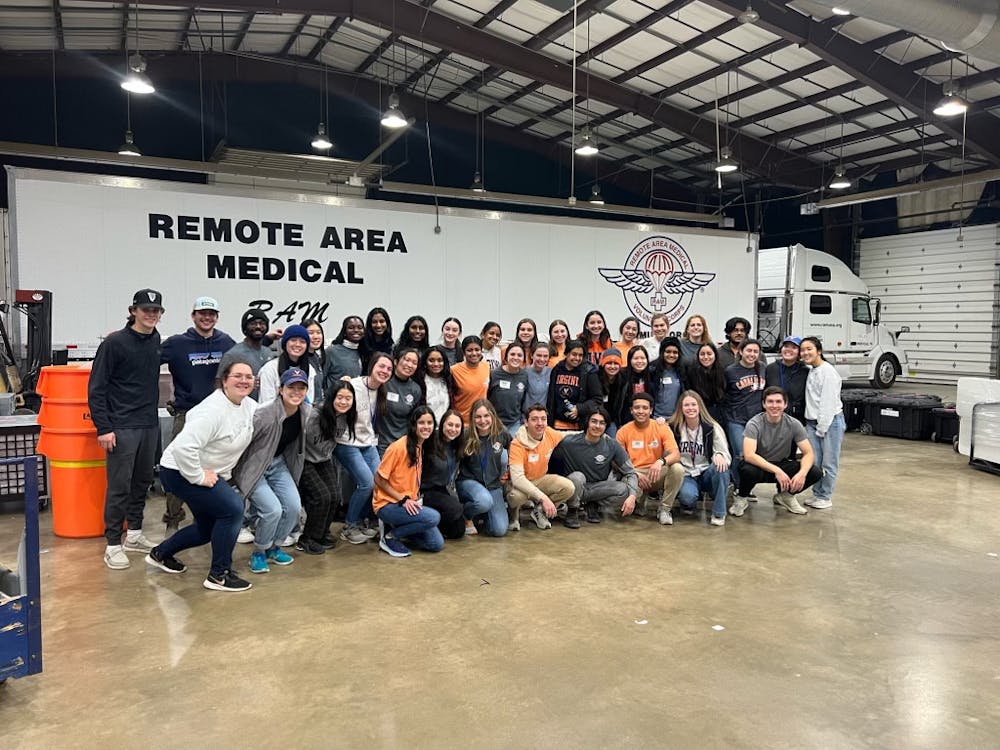Individuals with social anxiety disorder often interpret ambiguous social situations in a negative way. Casual scenes of laughter can evoke images of ridicule and feelings of isolation. The computer, a symbol of modern isolation through technology, may now offer a path to treatment of this disorder.
Arts & Sciences graduate student Meg Reuland, who works in the Teachman Lab at the University’s department of clinical psychology studying social anxiety disorder, is working on ways to use modern technology to combat the issue.
“Social anxiety is characterized by a marked fear of social situations, specifically a fear of embarrassment and humiliation,” Reuland said. “Everybody has some amount. For it to be a clinical problem it has to be impairing.”
For her dissertation, Reuland is studying the application of cognitive bias modification to the treatment of social anxiety disorder in early adolescence.
“[Cognitive bias modification] is a computerized rehearsal of shifting maladaptive beliefs,” Reuland said. “So in the same way that cognitive behavioral therapy does that through kind of talking and maybe some worksheets, CBM, or cognitive bias modification, aims to do that on a computer.”
The study includes 18 students in the 11-15 year age group as well as their parents. Social anxiety is one of the most common behavioral disorders of mid to late adolescence.
“It is in that window where it commonly emerges, but also by including the lower end of that age range … we wanted to improve outcomes for kids with early onset symptoms because it’s those kids who are really most at risk for experiencing chronic and impairing social anxiety,” Reuland said.
Social relationships are both complicated and important during adolescence, contributes to the prevalence of social anxiety in the age group.
“Over 30 percent of the population will meet clinical criteria for an anxiety disorder at some point in their life, but access to mental health resources is extremely scarce,” Reuland said. “These online treatments may be one way we could meet the dire global need for accessible health care.”
Affected children often avoid social scenarios, entrenching maladaptive behaviors.
“People who develop mental illness often have pre-existing vulnerabilities,” Reuland said. “So often in the kids with social anxiety, these were the little kids with … a sort of inhibited temperament. As they get older, that vulnerability can kind of change into a real problem if that kid encounters stressors.”
Reuland’s program builds on Project Implicit, a non-profit organization started in 1998, as a collaboration between scientists of the University of Washington, Harvard University and the University of Virginia. Project Implicit provides a virtual laboratory for the study of implicit social cognition.
Participants and parents use the program in eight sessions, which utilizes a series of 50 text-based scenarios with follow-up comprehension questions.
“We really need to keep people engaged if this is going to work,” Reuland said. “This was sort of a novel twist on CBM — it’s usually just the text. We included pictures [and] we also included sounds at the end of each 10-item block.”
Reuland designs the stories to be intentionally ambiguous until the ending, which resolves the ambiguity in a positive way. The end of the story contains an incomplete word with a missing letter for the participant to complete, ensuring engagement with the program.
“People sit down and go through sort of many, many trials of just practice, practicing interpreting ambiguous situations in a positive versus negative way,” Reuland said. “We hope that tries to shift some of the beliefs.”
The study also aims to correct behavior in parents, theorized to aid in the development of social anxiety in children.
“We have a child version that targets those beliefs associated with social anxiety like the misinterpretation that everyone is evaluating them negatively,” Reuland said. “The parent version targets beliefs we believe are associated with intrusive parenting … the kind of parenting that assumes a lack of competence of the child.”
Intrusive parenting blocks opportunities for children to experience social situations in a positive way, preventing children from gathering the experience necessary to prove negative interpretations incorrect.
“Part of my study aims to understand what role [parenting] actually plays,” Reuland said. “Research hasn’t completely explained the role of parenting in child anxiety.”
Reuland’s research focuses on only one application of CBM, which has shown promise for applications in a number of disorders ranging from depression to thought disorders like schizophrenia. Reuland now seeks to expand the study.
“This was really a small pilot study, I’d love to do a randomized control trial with a control group and just a larger sample,” Reuland said.
Reuland intends to follow the participants and observe the effects of the experiment over a longer term.
Individuals with social anxiety disorders currently have several available options for therapy.
“A lot of people just see it as who they are, but cognitive behavioral therapy is the gold standard treatment for social anxiety; … it does very well in helping people,” Reuland said. “Cognitive behavioral therapy or CBT is the first line treatment for social anxiety, and it’s a pretty good one.”
There is a distinction between isolation in the realm of academic stress and true social anxiety. Counseling and Psychological Services as well as the Ainsworth Clinic offer resources for University students to realize this end and provide the subsequent help they need.





